Python for Healthcare Robotics

Python for Healthcare Robotics
Introduction
Healthcare robotics is changing the medical field by using technology and robotics to improve patient care, enhance surgical procedures, and assist in rehabilitation processes. As the demand for advanced healthcare solutions continues to grow, programming languages play a critical role in developing and controlling robotic systems for medical purposes.
In this article, we will explore why Python has become the preferred programming language for healthcare robotics projects. We will look at its unique features, real-world examples, and future trends that make it stand out among other programming languages in this field.
Understanding Healthcare Robotics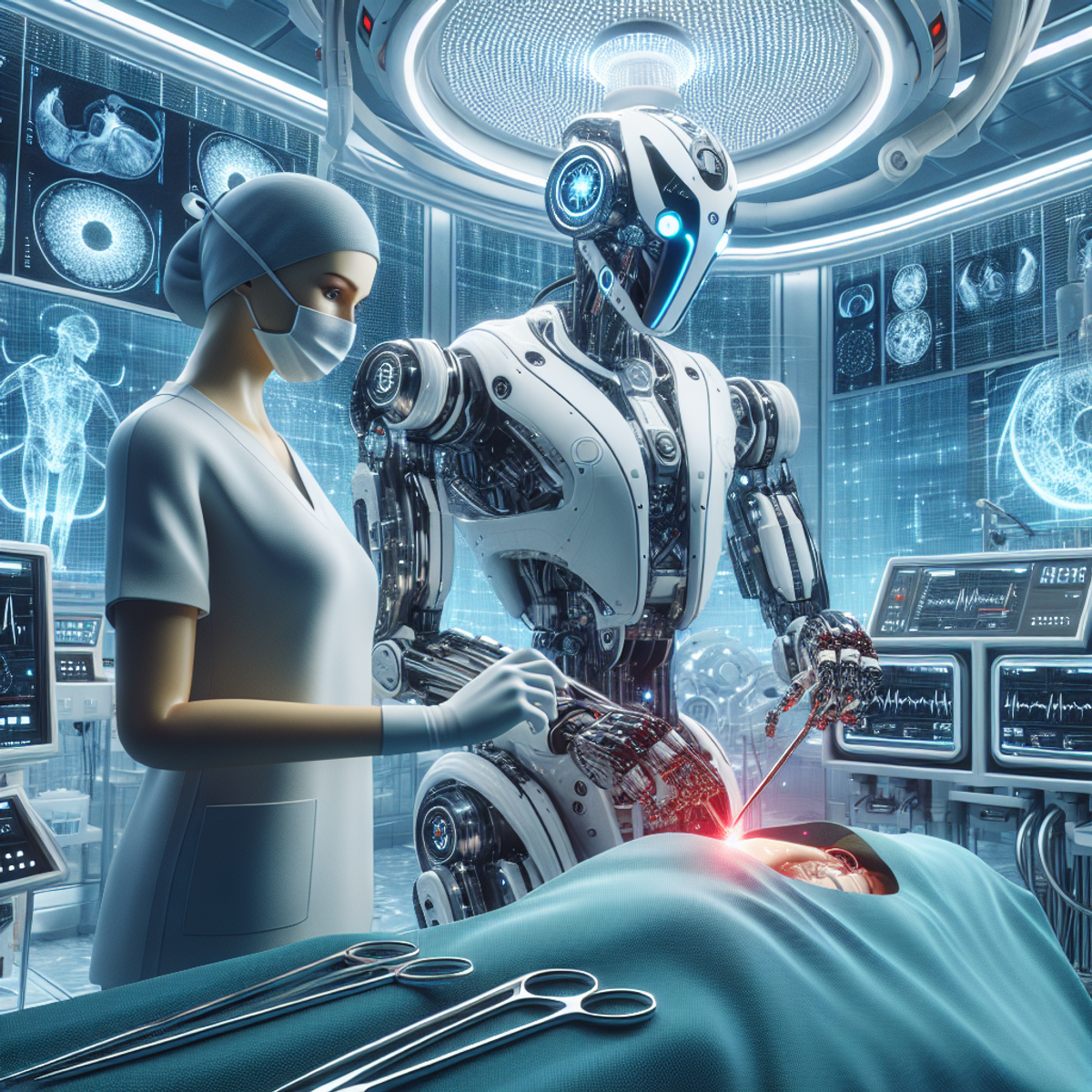
Healthcare robotics includes many different ways that robots are used in medical settings:
- Surgical robots that help surgeons during complex procedures
- Assistive devices that support patients with mobility issues
- Rehabilitation tools that aid in physical therapy sessions
Robots offer several benefits in healthcare:
- Increased precision and accuracy in surgeries, leading to better results and lower risks for patients
- Improved efficiency by automating repetitive tasks, allowing healthcare professionals to focus on more important parts of patient care
- Enhanced patient safety through reduced human errors and consistent treatment protocols
However, there are also challenges in implementing robotic systems in healthcare:
- High costs of getting and maintaining robot equipment which can limit their use
- Complex rules about using robots in medical environments that need careful navigation
- Needing collaboration between engineers, doctors, and researchers to smoothly add robots into existing healthcare processes
The Role of Programming Languages in Healthcare Robotics
Programming languages are essential for creating and controlling robotic systems in healthcare. They let developers write code that:
- Controls how the robot behaves
- Communicates with sensors and actuators (parts that move the robot)
- Makes decisions using algorithms (step-by-step instructions)
There are many programming languages available for healthcare robotics projects, but Python has become very popular because it is:
- Versatile: It can be used for many different purposes in robotics
- Easy to use: Its simple syntax (grammar rules) and clear structure make it beginner-friendly
In the next sections, we will look at the benefits of using Python in healthcare robotics, explore its basic ideas, and showcase important tools and frameworks that use Python's strength for different parts of healthcare robotics. Let's get started!
Understanding Healthcare Robotics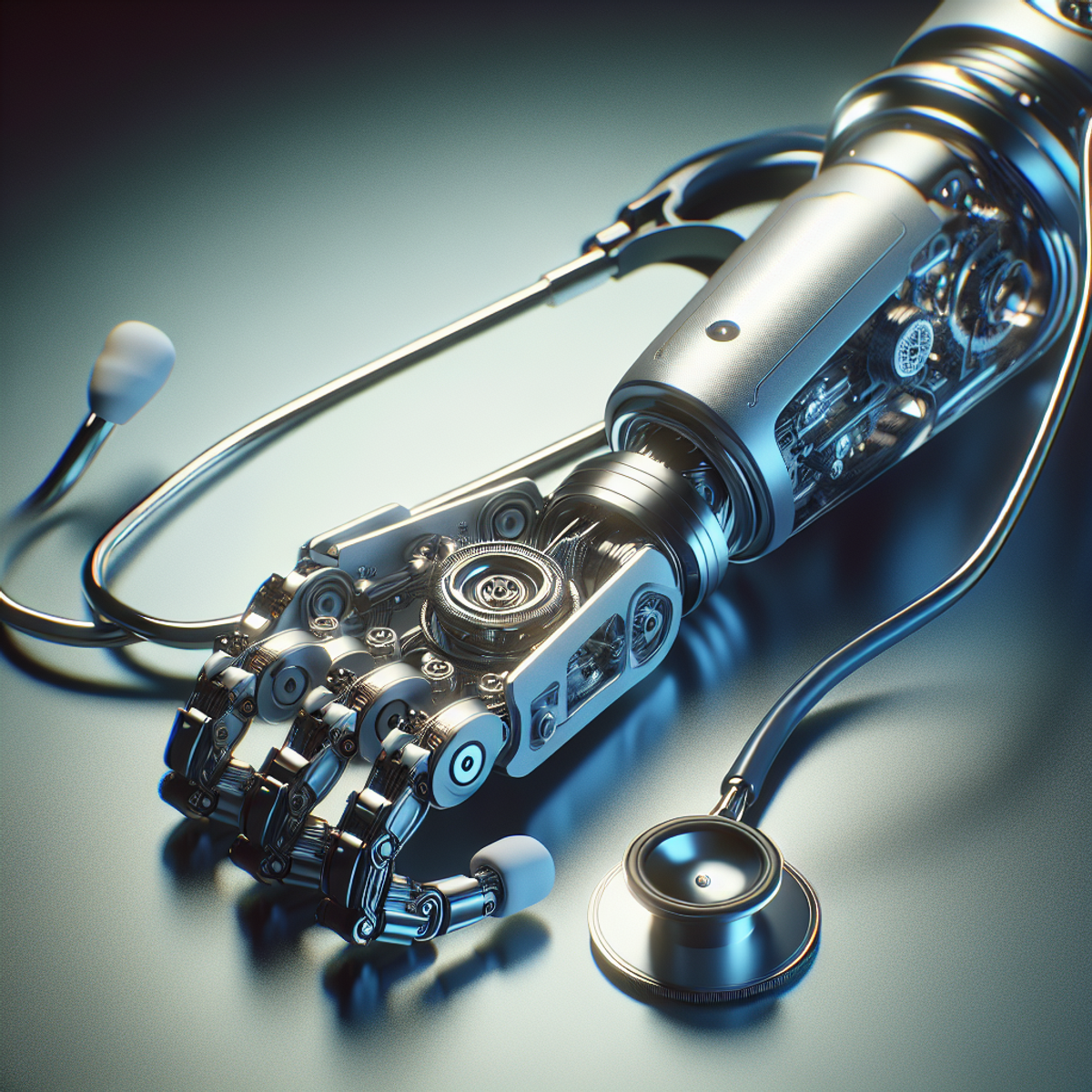
Healthcare robotics is a rapidly evolving field that combines the principles of robotics with the specific needs and challenges of the medical industry. It involves the use of robotic systems to perform a variety of tasks in healthcare settings, ranging from surgical procedures to patient care and rehabilitation. Here are some key points to help you understand healthcare robotics:
1. Comprehensive Definition
Healthcare robotics can be defined as the application of robotic systems in medical environments to assist healthcare professionals in performing various tasks, improving patient outcomes, and enhancing overall healthcare delivery. These robotic systems can be autonomous or teleoperated, depending on the specific application.
2. Diverse Range of Applications
Robotics is being utilized in a diverse range of applications within the healthcare field. Some notable examples include:
- Surgical Robots: These robots assist surgeons during minimally invasive procedures, providing enhanced precision and control. For instance, the da Vinci Surgical System utilizes robotic arms controlled by surgeons to perform intricate surgeries with higher accuracy and less invasiveness.
- Assistive Devices: Robotic devices are used to assist patients with disabilities or limited mobility. These devices can provide support for walking, lifting heavy objects, or performing daily activities that may otherwise be challenging for individuals with physical impairments.
- Rehabilitation Tools: Robotic systems play a crucial role in the rehabilitation process by assisting patients in regaining their motor skills and strength. For example, exoskeletons are used to aid patients in relearning how to walk after suffering from spinal cord injuries or strokes.
3. Advantages Offered by Robotics
The integration of robotics into healthcare settings brings several advantages:
- Increased Precision: Robotic systems can perform tasks with a level of precision that surpasses human capabilities. This is especially beneficial in surgical procedures where even small errors can have significant consequences.
- Enhanced Efficiency: Robots can carry out repetitive tasks with speed and accuracy, allowing healthcare professionals to focus on more complex and critical aspects of patient care.
- Improved Patient Safety: Robotics can reduce the risk of human errors during procedures, leading to improved patient safety outcomes. Additionally, robots can be sterilized, reducing the risk of infections in surgical environments.
4. Challenges in Implementation
While healthcare robotics offers numerous benefits, there are challenges that need to be addressed for successful implementation:
- High Costs: Developing and implementing robotic systems in healthcare settings can be expensive due to the advanced technology and specialized components involved. These costs may restrict access to robotics in some healthcare facilities.
- Complex Regulations: The integration of robotics in healthcare requires compliance with strict regulations and standards to ensure patient safety and data privacy. Meeting these requirements can be time-consuming and resource-intensive.
- Interdisciplinary Collaboration: Effective implementation of healthcare robotics requires collaboration between different disciplines, including engineers, clinicians, and researchers. This interdisciplinary approach is necessary to address technical, clinical, and ethical considerations.
By understanding the definition, applications, advantages, and challenges of healthcare robotics, we can appreciate the immense potential it holds for transforming the medical field.
The Role of Programming Languages in Healthcare Robotics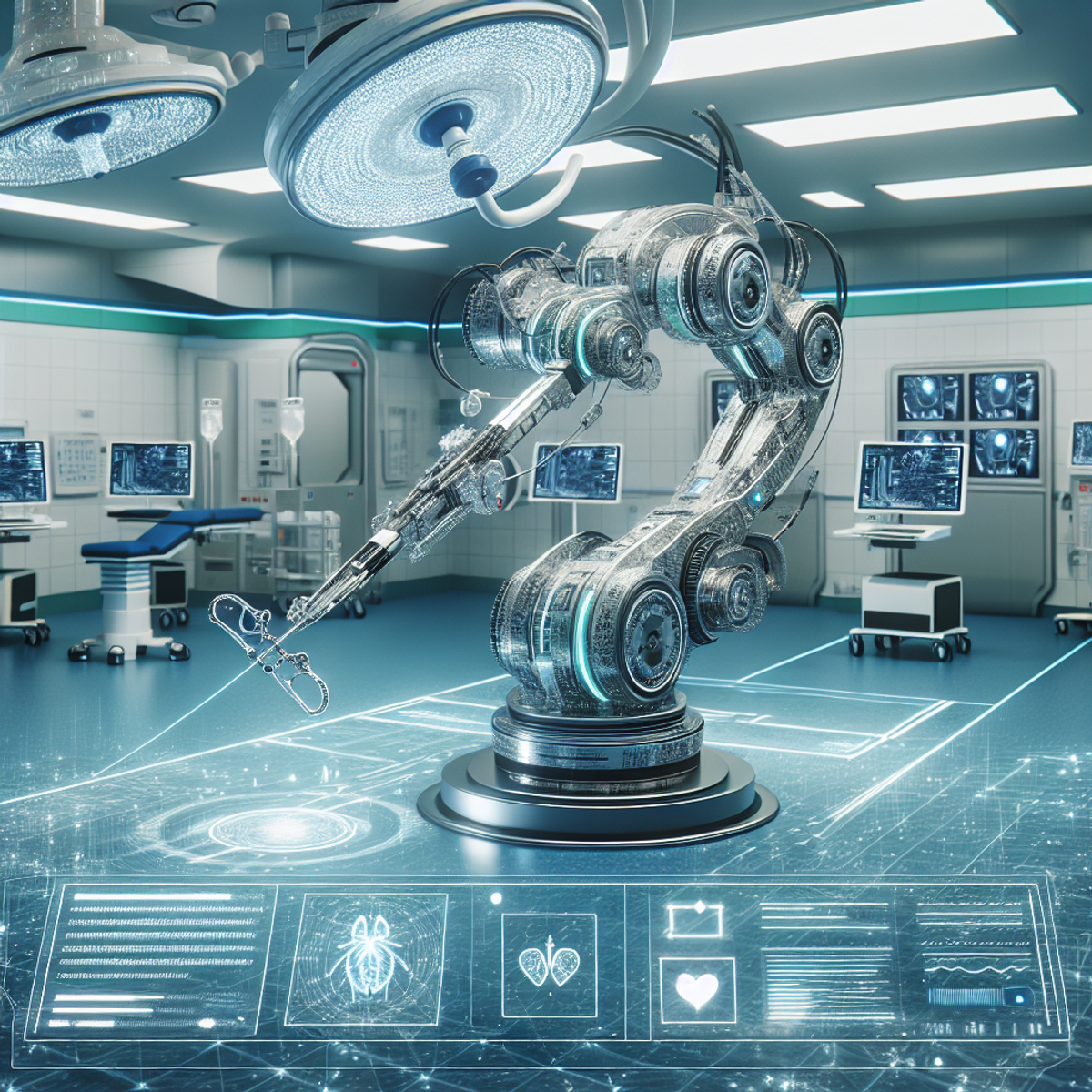
Programming languages are essential for creating and controlling robotic systems used in medicine. They form the basis for developing algorithms, implementing control mechanisms, and integrating different hardware components needed for healthcare robotics projects. In healthcare robotics, programming languages allow developers to design and construct smart systems that can:
- Interact with patients
- Assist in surgeries
- Perform complex tasks with accuracy
Why Python Stands Out
There are many programming languages available for healthcare robotics projects, but Python stands out for its widespread use and unique features. It has become popular among researchers, engineers, and developers in the field of healthcare robotics because of its:
- Versatility: Python can be used for a wide range of applications in healthcare robotics, from data analysis to machine learning.
- Readability: The language's syntax is clear and easy to understand, making it simpler to write and maintain code.
- Extensive Libraries: Python offers a vast collection of libraries specifically designed for scientific computing and machine learning tasks.
Python's popularity in healthcare robotics can be attributed to the following reasons:
- Ease of Use: Python's syntax is simple and intuitive, making it easier for developers to write clean and readable code. The language emphasizes code indentation and readability, which is especially beneficial when collaborating on complex healthcare robotics projects involving interdisciplinary teams.
- Extensive Libraries: Python boasts a vast ecosystem of specialized libraries and frameworks that cater specifically to tasks required in healthcare robotics. These libraries provide functionalities for machine learning (e.g., scikit-learn), computer vision (e.g., OpenCV), sensor integration, data analysis, and visualization. Leveraging these libraries saves development time and effort by offering pre-built solutions for common challenges in healthcare robotics.
- Community Support: Python has a strong community support system with active forums, online resources, and open-source contributions. Developers working on healthcare robotics projects can tap into this community to seek advice, share knowledge, collaborate on projects, and find solutions to common problems they may encounter along the way.
- Interoperability: Python's ability to interface with other programming languages makes it suitable for integrating different components of a healthcare robotics system. For instance, Python can be used in conjunction with C++ libraries through language bindings, allowing developers to leverage existing robotics frameworks like ROS (Robot Operating System) that are primarily written in C++. This interoperability enables seamless communication between different software and hardware components of a healthcare robotics system.
- Rapid Prototyping: Python's flexibility and ease of use make it an ideal choice for rapid prototyping in healthcare robotics. Developers can quickly iterate and experiment with different algorithms, control strategies, and sensor integrations using Python, enabling faster development cycles and reducing time-to-market for healthcare robotics solutions.
In summary, programming languages play a critical role in healthcare robotics by providing the tools and capabilities necessary for developing intelligent systems that improve patient care, surgical precision, and efficiency in medical procedures. Python's widespread adoption in the field can be attributed to its ease of use, extensive libraries, strong community support, interoperability with other languages, and suitability for rapid prototyping. In the following sections, we will delve deeper into Python fundamentals for healthcare robotics and explore essential libraries and frameworks that leverage the power of Python in this domain.
Advantages of Using Python in Healthcare Robotics
Python is widely regarded as an ideal programming language for healthcare robotics projects. Its unique combination of flexibility, readability, and a vast ecosystem of specialized libraries and frameworks makes it the top choice for developers in the field. In this section, we will explore the key advantages of using Python in healthcare robotics.
1. Flexibility and Readability of Python Code
Python's clean and concise syntax allows developers to write code that is easy to understand and maintain. This is particularly crucial in dynamic healthcare environments where rapid prototyping and frequent updates are common. The simplicity of Python code enables developers to quickly iterate on ideas and implement changes efficiently.
Example:
python def detect_abnormalities(image): # Perform image processing operations # Detect abnormal features # Return results pass
2. Vast Ecosystem of Specialized Libraries and Frameworks
Python boasts an extensive collection of libraries and frameworks specifically designed for tasks like machine learning, computer vision, and sensor integration - all of which are essential in healthcare robotics. These libraries provide pre-built functions and algorithms that can be easily integrated into robotic applications, saving time and effort for developers.
Some notable libraries include:
- scikit-learn: A popular machine learning library in Python that offers a wide range of algorithms for tasks such as medical image classification and predictive diagnostics.
- OpenCV (Open Source Computer Vision): Essential for processing visual data from robot sensors in healthcare applications, such as surgical navigation and monitoring systems.
- TensorFlow: A powerful framework for building machine learning models that can be applied to various aspects of healthcare robotics, including data analysis, decision-making algorithms, and predictive modeling.
The popularity of Python in the field of machine learning, as evident from its widespread adoption in various industries including healthcare, is also supported by research findings.
3. Strong Community Support with Active Forums and Online Resources
Python has a vibrant community of developers who actively contribute to its growth and share their knowledge through forums, tutorials, and open-source projects. This strong community support ensures that developers working on healthcare robotics projects can easily find help and guidance whenever they encounter challenges or need to learn new techniques.
The Python community also organizes various conferences and workshops dedicated to healthcare robotics, where experts share their experiences, present research findings, and demonstrate the latest advancements in the field. Engaging with this community allows developers to stay updated with the latest trends and leverage the collective knowledge for their own projects.
Example:
The ROS (Robot Operating System) community has developed numerous Python packages that provide ready-to-use functionalities for healthcare robotics. These packages cover areas such as robot control, perception, planning, and simulation. By leveraging these existing resources, developers can accelerate the development process and focus on specific healthcare applications.
Python offers several distinct advantages for healthcare robotics projects:
- Its flexibility and readability make it an ideal choice for prototyping and maintaining robotic applications in dynamic healthcare environments.
- The vast ecosystem of specialized libraries and frameworks provides essential tools for tasks like machine learning, computer vision, and sensor integration.
- Additionally, the strong community support ensures that developers have access to active forums, online resources, and open-source contributions for knowledge sharing
Python Fundamentals for Healthcare Robotics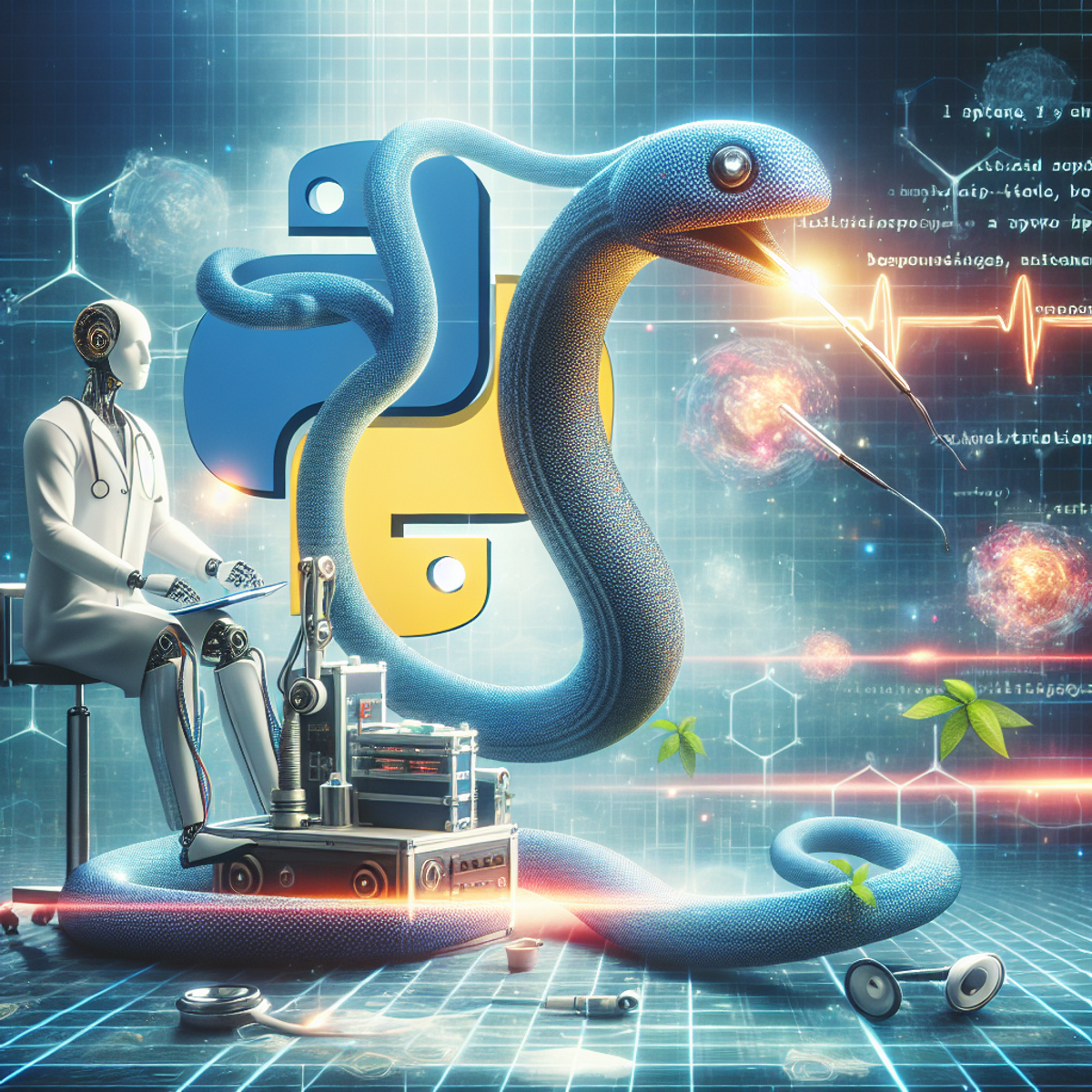
Python is a versatile and user-friendly programming language that has gained significant popularity in the field of healthcare robotics. Understanding the fundamentals of Python is essential for developing and controlling robotic systems for medical purposes. Here, we will delve into the core concepts of Python programming and its relevance to healthcare robotics.
Python Syntax and Readability
- Python syntax is known for its simplicity and emphasis on code indentation, which enhances readability and reduces the likelihood of syntax errors. This feature is particularly advantageous in healthcare robotics, where complex algorithms need to be implemented accurately.
Core Concepts of Variables, Data Types, and Basic Operations
- In Python, variables are used to store data values. The flexibility of Python allows variables to be reassigned with different data types, making it suitable for dynamic healthcare environments.
- Python supports various data types such as integers, floats, strings, and booleans. This versatility enables developers to work with diverse datasets commonly encountered in healthcare robotics applications.
- Basic operations in Python include arithmetic (addition, subtraction, multiplication, division), as well as string manipulation and logical operations. These foundational operations form the building blocks for implementing algorithms in healthcare robotics.
Control Flow Statements for Decision-Making Logic
- Control flow statements such as if-else conditions and loops are instrumental in implementing decision-making logic in healthcare robotics algorithms.
- In scenarios where robotic systems need to adapt to dynamic patient conditions or environmental changes, control flow statements enable the execution of specific actions based on predefined criteria.
Understanding these fundamental aspects of Python programming lays the groundwork for leveraging its capabilities in developing robust and adaptable solutions for healthcare robotics.
Essential Libraries and Frameworks for Healthcare Robotics in Python
Python offers a wide selection of libraries and frameworks that can significantly enhance healthcare robotics projects. These tools, designed for control, simulation, machine learning, and computer vision, leverage Python's capabilities. Here are some of the essential libraries and frameworks used in healthcare robotics:
1. PyRobot
Developed by Facebook AI Research, PyRobot is a Python interface that allows developers to control and simulate robots from different hardware vendors. It provides a unified API for interacting with robot arms, grippers, sensors, and other components. PyRobot simplifies the process of programming robots by abstracting away the low-level details of different robot platforms. With PyRobot, developers can focus on higher-level tasks such as perception, planning, and control.
2. ROS (Robot Operating System)
Although primarily written in C++, ROS provides Python bindings and a wide range of existing packages for building robot applications in a distributed framework. ROS is widely used in the robotics community due to its modular architecture and extensive support for communication between different nodes. It offers libraries for various functionalities such as perception, mapping, navigation, and manipulation. The availability of Python bindings makes it easier for developers to write ROS nodes using Python.
3. scikit-learn
As a popular machine learning library in Python, scikit-learn plays a crucial role in healthcare robotics applications. It provides a wide range of algorithms for classification, regression, clustering, and dimensionality reduction. In the context of healthcare robotics, scikit-learn can be applied to tasks like medical image classification, predictive diagnostics, and anomaly detection. With its user-friendly API and extensive documentation, scikit-learn enables developers to leverage the power of machine learning in their robotic systems.
4. OpenCV (Open Source Computer Vision)
Computer vision plays a vital role in healthcare robotics, particularly in applications such as surgical navigation, monitoring systems, and image-guided interventions. OpenCV is an essential library for processing visual data from robot sensors. It provides a wide range of functions and algorithms for image and video processing, feature detection, object recognition, and camera calibration. OpenCV's Python bindings make it easy to integrate computer vision capabilities into healthcare robotics projects.
These libraries and frameworks offer significant advantages for healthcare robotics projects developed in Python. Leveraging these tools can greatly enhance the capabilities of robotic systems in the medical field. The flexibility and readability of Python code make it easier to prototype and maintain robotic applications in dynamic healthcare environments. Moreover, the vast ecosystem of specialized libraries and frameworks supports tasks such as machine learning, computer vision, sensor integration, and control.
Python's strong community support further enhances its suitability for healthcare robotics. Active forums, online resources, and open-source contributions facilitate knowledge sharing and collaboration among developers in the field. The Python community is known for its responsiveness and willingness to help newcomers. This collaborative environment ensures that developers working on healthcare robotics projects have access to valuable resources and assistance when needed.
Python offers a range of essential libraries and frameworks that make it an ideal choice for healthcare robotics projects. PyRobot simplifies robot control and
Real-world Applications
Real-world applications of Python in healthcare robotics demonstrate its versatility and effectiveness in various domains. Let's explore some examples where Python is successfully employed:
- Robotic-Assisted Surgery: Surgical robots like the da Vinci system utilize Python for precise instrument control and real-time feedback mechanisms. Python's flexibility allows surgeons to manipulate robotic arms with precision, enhancing surgical procedures. For example, Python can be used to control the movement of robotic arms, adjust the positioning of surgical tools, and provide haptic feedback to the surgeon.
- Prosthetics and Exoskeletons: Python plays a crucial role in developing advanced limb prostheses and wearable robots for rehabilitation purposes. With Python, developers can program intelligent algorithms that interpret sensor data and control prosthetic limbs or exoskeletons accordingly. Python's ability to handle complex data processing tasks, combined with its ease of use, makes it an ideal choice for designing personalized assistive devices.
- Autonomous Monitoring Devices: In hospitals, continuous patient monitoring is essential for timely intervention and reducing staff workload. Python-based autonomous robots are employed for this purpose. These robots navigate hospital corridors and patient rooms, collecting vital data such as temperature, heart rate, and blood pressure. By using Python, these robots can analyze the collected information and alert medical staff if any abnormalities are detected.
- Rehabilitation Robotics: Python is extensively used in the field of rehabilitation robotics to develop assistive devices that aid patients in their recovery process. These devices include robotic arms for therapy exercises or exoskeletons that help individuals regain mobility after injuries or surgeries. Python's ability to handle complex algorithms for motion control and kinematics makes it a preferred choice for developing these systems.
- Telemedicine Robots: With the increasing demand for remote healthcare services, telemedicine robots have become crucial in providing medical care from a distance. These robots equipped with cameras and screens enable doctors to remotely examine patients and provide consultations. Python is used to develop the software that controls these robots, allowing doctors to maneuver them and interact with patients effectively.
- Artificial Intelligence in Healthcare: Python's versatility extends beyond just robotics in healthcare. It also plays a significant role in the implementation of AI applications in various medical fields. From diagnostic algorithms to drug discovery, Python empowers healthcare professionals and researchers by providing them with the tools necessary to leverage AI effectively.
Python's versatility and extensive library ecosystem make it an ideal choice for healthcare robotics applications. Its ease of use, readability, and large community support contribute to its widespread adoption in the field. Through Python, developers can prototype and implement complex algorithms more efficiently, enabling advancements in healthcare robotics.
Challenges and Future Directions
The use of Python in healthcare robotics brings numerous advantages, as discussed in the previous sections. However, it is important to acknowledge the challenges that may arise when using Python in critical healthcare scenarios. Additionally, exploring future trends and research directions can provide valuable insights into the potential advancements of Python in healthcare robotics.
Challenges in Using Python for Healthcare Robotics
- Safety Concerns: One of the primary challenges in healthcare robotics is ensuring the safety of patients and healthcare professionals. As this article explains, Python's interpreted nature may not provide real-time performance required for certain safety-critical tasks. High-performance computing platforms or hardware accelerators may be needed to address this challenge.
- Limited Computational Resources: Healthcare robotics often involves computationally intensive tasks such as real-time image processing or machine learning algorithms. While Python provides a high-level and user-friendly interface, it may not be the most efficient language for handling large datasets or running complex algorithms. According to this paper, optimizations such as parallel computing or leveraging specialized hardware can help mitigate this challenge.
- Interoperability with Existing Systems: Healthcare environments typically have complex infrastructure, including electronic health records (EHR) systems and medical devices with proprietary interfaces. Integrating Python-based robotics solutions with these existing systems can pose interoperability challenges. This study suggests that developing standardized protocols and interfaces can facilitate seamless integration and data exchange between different systems.
Future Trends and Research Directions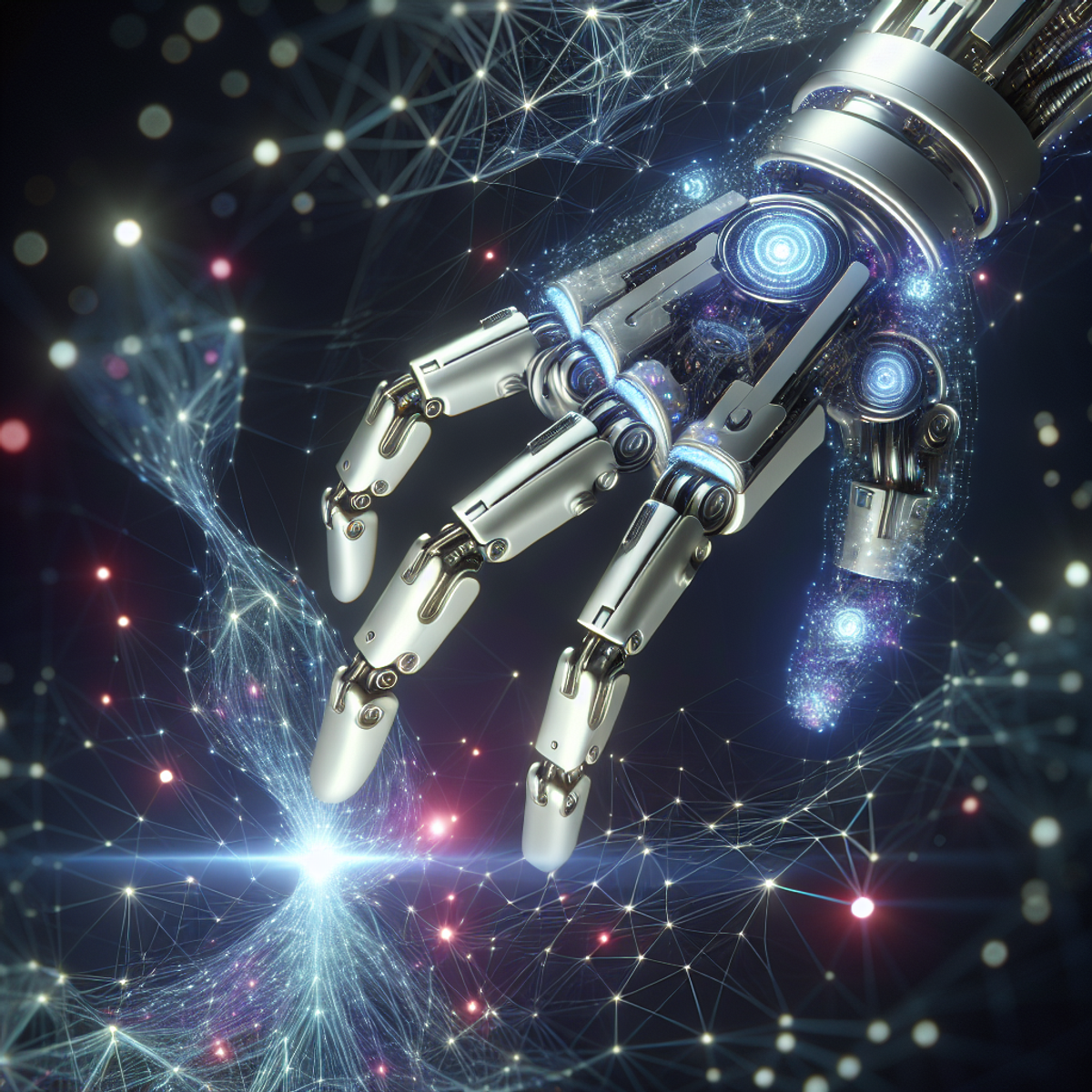
- Improved Integration with Data-Driven Methods: The field of healthcare robotics is rapidly evolving, with increasing emphasis on data-driven methods such as artificial intelligence (AI) and machine learning (ML). Python's extensive ecosystem of AI/ML libraries makes it well-suited for integrating these data-driven approaches into healthcare robotics applications. As highlighted in this article, future research should focus on enhancing the integration between Python and data-driven methods to enable more advanced decision-making capabilities for robots.
- Standardization Efforts: In order to ensure the widespread adoption and deployment of Python-based healthcare robotics solutions, standardization efforts are crucial. This includes developing standardized communication protocols, data formats, and safety guidelines. By establishing industry-wide standards, interoperability issues can be addressed, leading to more efficient collaboration and integration of different robotic systems in healthcare settings.
- Addressing Security Concerns: As healthcare robotics involves the processing and exchange of sensitive patient data, security is a critical concern. Future research should focus on enhancing the security features of Python frameworks and libraries used in healthcare robotics. This includes implementing robust encryption mechanisms, access control measures, and data anonymization techniques to protect patient privacy and ensure compliance with data protection regulations.
By addressing these challenges and exploring future trends, Python can continue to play a significant role in advancing healthcare robotics:
- Flexibility: Python's versatility allows for quick prototyping and adaptation to changing requirements in healthcare robotics projects.
- Ecosystem: The extensive collection of libraries and frameworks available in Python enables developers to leverage existing tools for various tasks such as computer vision, motion planning, or sensor integration.
- Community Support: The active community of Python developers provides resources, knowledge sharing, and
Conclusion
Python offers immense potential for driving innovation in healthcare robotics projects. Its versatility, ease of use, and extensive libraries make it an excellent choice for developing cutting-edge solutions in this field.
However, it's important to remember that Python is just one piece of the puzzle. To create truly impactful and responsible healthcare robotics solutions, it should be combined with other technologies such as machine learning, computer vision, and hardware engineering.
Additionally, ethical considerations must always be at the forefront of any medical technology development. As we continue to leverage Python and other tools to transform healthcare, we must prioritize patient safety, privacy, and inclusivity.
By harnessing the power of Python while keeping these factors in mind, we can pave the way for a future where robots play a vital role in improving patient care and overall well-being.
FAQs (Frequently Asked Questions)
What is the significance of Python in healthcare robotics?
Python plays a crucial role in healthcare robotics projects due to its flexibility, readability, vast ecosystem of specialized libraries and frameworks, and strong community support. It is the preferred programming language for developing and controlling robotic systems for medical purposes.
What are some of the advantages offered by robotics in the medical field?
Robotics in the medical field offers increased precision, efficiency, and patient safety measures. It is being utilized in various applications such as surgical robots, assistive devices, and rehabilitation tools.
Why is Python considered an ideal programming language for healthcare robotics?
Python is considered an ideal programming language for healthcare robotics due to the flexibility and readability of its code, the vast ecosystem of specialized libraries and frameworks available for tasks like machine learning and computer vision, and its strong community support with active forums, online resources, and open-source contributions.
What are some essential Python fundamentals for healthcare robotics?
Python fundamentals for healthcare robotics include an overview of Python syntax with an emphasis on code indentation and readability, core concepts of variables, data types, basic operations, and the use of control flow statements (if-else, loops) for implementing decision-making logic in healthcare robotics algorithms.
What are some key libraries and frameworks leveraging Python for healthcare robotics?
Key libraries and frameworks that leverage the power of Python for healthcare robotics include PyRobot for controlling and simulating robots from different hardware vendors, ROS (Robot Operating System) with Python bindings and a wide range of existing packages, scikit-learn for machine learning tasks, and OpenCV for processing visual data from robot sensors.
Can you provide some real-world examples where Python is employed in healthcare robotics?
Real-world examples where Python is successfully employed in different domains of healthcare robotics include its use in robotic-assisted surgery for precise instrument control, prosthetics and exoskeletons development, as well as autonomous monitoring devices for continuous patient monitoring in hospitals.
What are some challenges and future directions related to using Python in healthcare robotics?
Challenges that may arise when using Python in critical healthcare scenarios include safety concerns, limited computational resources, and interoperability with existing systems. Future directions for Python in healthcare robotics may involve improved integration with data-driven methods (AI/ML) or standardization efforts to address security issues.

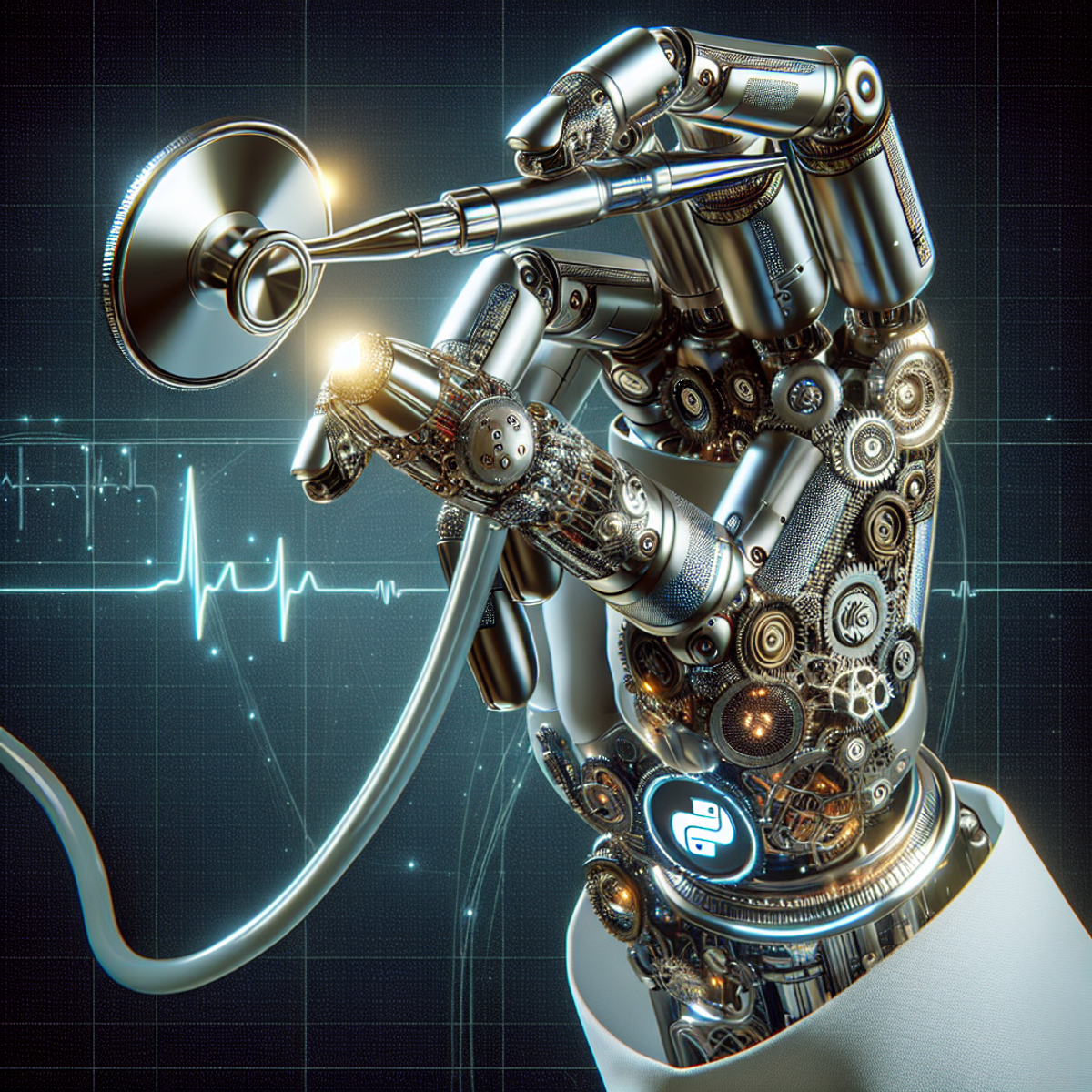


Comments
Post a Comment